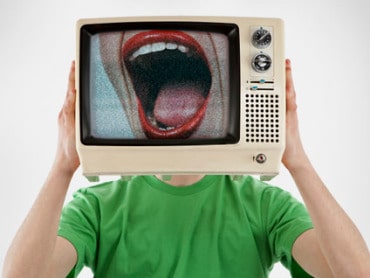Five years ago, if hearing professionals received a nickel every time patients complained about excessive volume of TV commercials, they could’ve all retired in short order. The retirement fund kitty started to disappear back in 2012 when the US Congress reached consensus and passed the Commercial Advertisement Loudness Mitigation Act (CALM Act). The story of that bill is that it originally came into effect after a congresswoman’s family dinner was interrupted by loud commercials on TV.
The CALM legislation went into effect in December 2012, in response to the “most commented-on issue (to the FCC) in the last 40 years.” CALM directed the FCC to regulate TV commercials’ volume according to formulas/protocols developed by an industry report and summarized in a Best Practices quick reference guide. CALM required that this happen within two years, allowing one year for the FCC to get going and another year for the TV providers to comply.
How Bad Was It Then?
Prior attempts to regular TV commercials volume had failed, so the CALM Act was a milestone. How bad was the problem? Here’s a good quote that summed it up:
For decades, television advertisers have been one-upping each other by turning up the volume — essentially trying to shout louder than the competitors next to them. “Every day, millions of Americans are barraged with abrasively loud television commercials,” Senator Sheldon Whitehouse, Democrat of Rhode Island, said this fall, making the TV-watching process sound downright painful.
Dispensers, Audiologists and their patients recall that the TV-watching process WAS painful for those with hearing loss, even when they are fitted with appropriate amplification. Professionals who who fit amplification had a bag of strategies they hauled out at the fitting and follow-up appointments, including:
- Keep your finger on the remote “mute” button.
- Record the shows and fast-forward the commercials.
- Subscribe to a DVR service such as TIVO.
Many patients had their own home grown solution, namely to of split up and watch separate TVs at home. Others adopted infra-red or Bluetooth devices to watch/listen to TV, but none of those works intelligently to “detect” commercials and turn them down/off. Even as hearing aids became Smart, they failed to incorporate “loud ad detection” as a feature.
How Good Is It Now?
Ads are still here, they’re getting more numerous, and they’re still loud. CALM helps, but it’s already required an upgrade.
When CALM was enacted, most TV groups declined to comment after it passed, but one ABC spokesman (probably not from advertising) did weigh in on the side of reason:
“Shouting usually doesn’t get your point across in discussions, in speakers at the drive-through, or in TV commercials. The key is raising the level of creativity, not the volume.” Here, here!
Practically everyone but ad men wonder why commercials are so loud in the first place. The standard advertising rationale is that you have to grab people’s attention to push a product; hence, the louder the better. We know of no research that proves this to be a valid rationale when it comes to sound levels.
Despite burgeoning online viewing options since 2012, TV remains the dominant global advertising medium, accounting for 37% of all ad dollars spent in 2015. The Wall Street Journal anticipates a 3-5% increase in TV advertising this year and PricewaterhouseCoopers projects US TV ad revenue growth from $73B in 2016 to $81.7B in 2020. In addition to high sound volume, TV advertising is working on a different kind of volume as well. Since 2009, the number of ads per hour has been steadily increasing.
With that many dollars at stake, it was a sure bet that some advertisers would find a loophole. That loophole was in CALM language, which stated that a commercial must be no louder on average than surround programming. Loud ads could simply lower volume mid-stream to achieve the desired average loudness, thus subverting the intent of the CALM act and driving listeners from the room. In the same vein, inserting moments of silence into ads could lower average volume and bring advertisers into CALM compliance.
Not to be outdone, the FCC issued an update to the act in June of 2014 to mitigate the effect and close the loophole. The FCC by-passed controversy and prolonged discussion by adopting the recommendation of the TV industry’s standard-setting body, the Advanced Television Systems Committee. By report, the adopted recommendation provides a new noise calculation algorithm designed to:
“… keep advertisers from using silence to offset excessive loudness in calculating the average volume of a commercial. It employs ‘gating’ that ‘will exclude very quiet or silent passages of a commercial when calculating the average loudness of that commercial.'”
The CALM update gave advertisers a one year window to comply. Theoretically, all TV advertising should have met the new standard by June 14, 2015. Have you noticed fewer complaints from patients since then?
feature image courtesy of NBR







